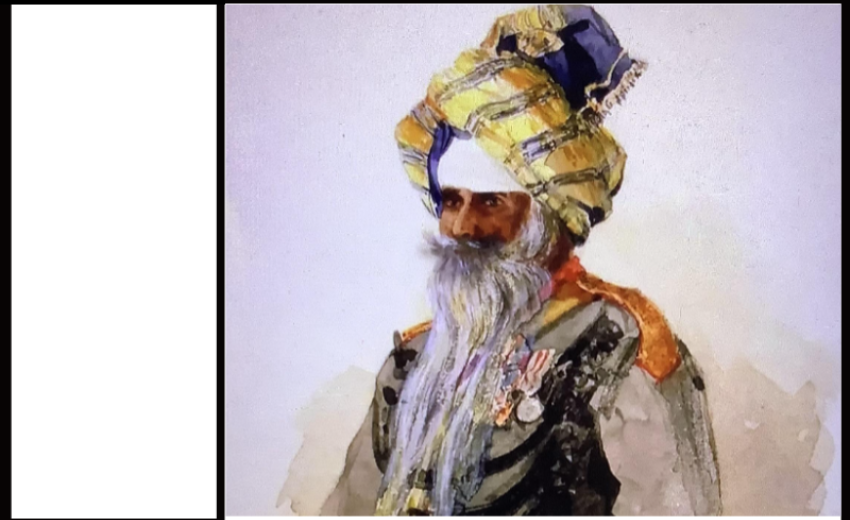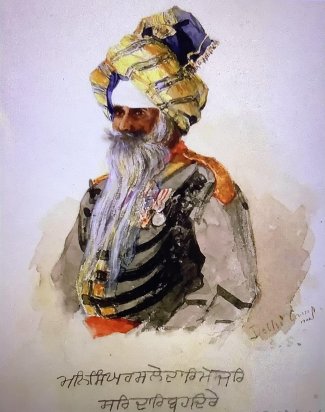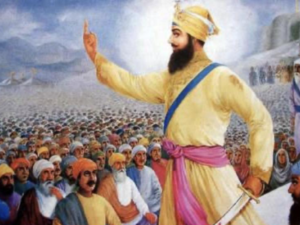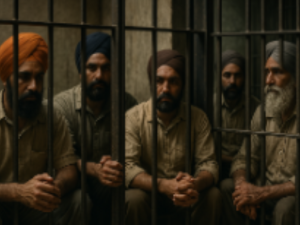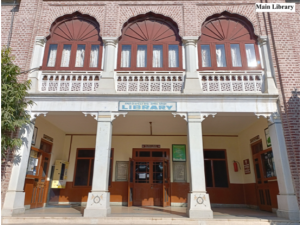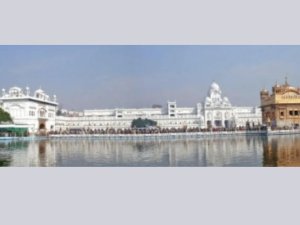Sardar Bahadur Maan Singh was the founder of the Hudson’s Horse Regiment (now known as the 4th Horse Regiment). This brave, devout, and dignified Sikh figure has received little attention from Sikh historians, but the British have preserved his remarkable tales of valor in their books and official records.
A glance at Sardar Bahadur Maan Singh’s family history reveals that his ancestors established a legacy of honor and devotion. His forebear, Chaudhary Tej, migrated from Ghazni and laid the foundation of the town of Roorriala (district Gujranwala). In 1759, Maan Singh’s grandfather, Bhagat Singh, embraced Sikhism and became a baptized Sikh. Bhagat Singh had two sons, Sardar Seva Singh and Sardar Deva Singh, and a daughter, Devi, who married Sardar Gujar Singh, a prominent leader of the Bhangi Misl.The two brothers, Seva Singh and Deva Singh, were granted substantial estates in Losihra (district Gujarat). Sardar Deva Singh’s daughter was married to Sardar Jael Singh of Sahnewal, while his son, Sardar Jodh Singh, joined the Sikh cavalry at the young age of 15 in 1813. In 1825, Jodh Singh entered the service of Prince Sher Singh’s army and played a crucial role in the campaigns against Sayyid Ahmad Khan in 1831. From 1834 to 1848, Jodh Singh served under Raja Hira Singh as a commander and later collaborated with Diwan Hukam Rai in the regions of Mamdot and Muktsar.
During Maharaja Sher Singh’s reign, Jodh Singh commanded a 300-horse cavalry unit in Majha, tasked with eradicating banditry. After the Sutlej campaign, he was appointed judicial officer in Amritsar with an annual salary of Rs. 3,000. His nephew, Sardar Maan Singh, continued the family legacy, serving as a distinguished officer of the Khalsa Army and later becoming the Custodian of Sri Harmandir Sahib.
The Early Life and Military Career of Maan Singh
Born into the Vaddaych clan, Sardar Maan Singh was the son of Sardar Deva Singh. Known for his intelligence, valor, and leadership, he joined the Sikh cavalry in 1822 at the age of 25. The cavalry was considered the elite force of Maharaja Ranjit Singh’s Khalsa Army. During his service, Maan Singh distinguished himself in battles in Afghanistan, the conquest of Peshawar, and various other campaigns.
An English traveler, Baron Hugel, in his book Travels in Kashmir and Punjab (p. 33), lauded the Sikh cavalry for their impressive drills and appearance. He described their black beards, colorful turbans, and martial attire as a striking and imposing sight. Maan Singh’s valor shone brightly during significant battles such as Ferozeshah, Sobraon, and Mudki, where he fiercely resisted British forces. Despite achieving victories, he was compelled to retreat under orders from his commander, Tej Singh.
Service During British Rule
After the fall of the Sikh Empire, Maan Singh was appointed commander of the Hudson’s Horse Regiment, which was initially formed under the supervision of Punjab’s Lieutenant Governor Robert Montgomery. The regiment, composed mainly of former Khalsa soldiers, was a tribute to the Sikh military tradition.
Maan Singh played a critical role in organizing the regiment and led it during the tumultuous years of the Indian Rebellion of 1857. He reached Delhi with his cavalry on July 23, 1857, just two days before a crucial battle. His bravery and tactical acumen were instrumental in capturing the Mughal Emperor and his sons, a feat that became a celebrated chapter in the regiment’s history. By 1858, Maan Singh was engaged in the Oudh campaign, demonstrating extraordinary resilience and leadership despite being over 60 years old. His contributions earned him the rank of Risaldar Major in the 9th Bengal Cavalry on March 9, 1866.
Later Life and Contributions to Sikh Institutions
After retiring from active service in 1877, at the age of 80, Maan Singh settled in Amritsar. He dedicated his life and wealth to the service of Sikhism and its institutions. In 1879, he was appointed as a magistrate and became the Custodian of Sri Harmandir Sahib.
As Custodian, Maan Singh played a significant role in the Singh Sabha movement, which aimed to rejuvenate Sikh identity and education. He collaborated with prominent leaders like Thakur Singh Sandhawalia and Giani Gian Singh to establish the Khalsa College in Amritsar. The inaugural meeting for the college took place in 1883, and the institution was formally inaugurated on March 5, 1892. Maan Singh passed away shortly after, on March 16, 1892, at the venerable age of 95. His legacy as a soldier, administrator, and benefactor of Sikhism remains a testament to his extraordinary life.
Legacy and Recognition
Sardar Bahadur Maan Singh was honored with numerous awards and land grants across Gujranwala, Lahore, Sialkot, Sheikhupura, Montgomery, and Lyallpur. He also received estates in Oudh (Lucknow), including seven villages. His haveli and properties near Sri Harmandir Sahib remain symbols of his contributions to Sikh heritage.
Today, the Bungaa-Rooriala in the Darbar Sahib complex stands as a tribute to his enduring legacy. His family lineage continues to include distinguished individuals such as Major (Dr.) B.K. Sohi of Chandigarh, who uphold the family’s storied traditions.
